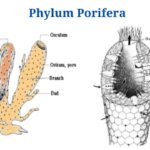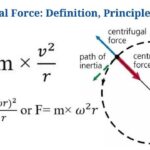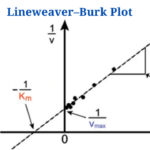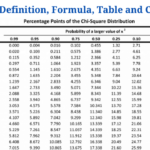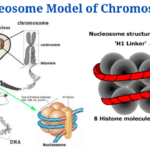Definition of Autotroph
An autotroph is a group of organisms that can make their own food from a variety of sources, including sunlight, air, water, and other chemicals.
- The word autotroph is made up of the words auto (meaning self) and troph (meaning sustenance).
- Autotrophs, on the other hand, are capable of making their own nourishment without the help of others.
- Autotrophs are often regarded as “producers,” because they are the basis of ecological food chains, providing nourishment to all of the different organisms.
- Autotrophs are critical because all the other living organisms rely on them for food and energy, either directly or indirectly.
- Plants are the most well-known autotrophs, but there are various other types of autotrophs in nature, including algae, phytoplankton, and bacteria.
- Photosynthesis is used by most autotrophs to convert solar energy to chemical energy, although additional processes such as phototrophy and chemotrophy are also used by some autotrophs.
- Chlorophyll is a photosynthetic pigment found in all green plants that aids in photosynthesis. Some bacteria, algae, and phytoplankton use other pigments for photosynthesis, such as bacterial rhodopsin and carotenoids.
- Some uncommon autotrophs produce food by a method called chemosynthesis, which uses chemical reactions to generate energy in place of sunlight.
- Organisms that carry out chemosynthesis survive in harsh habitats that contain the poisonous chemicals required for the reactions. Sulfur is used by bacteria which is available inside volcanoes to make food.
- The initial trophic level within the food chain is formed by autotrophs. Herbivores that constitute the second trophic level, eat these species, and so on.
- As the number of autotrophs increases, so does the number of consumers. For the time being, as the number of autotrophs diminishes, all other trophic levels become starving.
Definition of Heterotroph
- Heterotroph is a type of organism which gets its nourishment from other organisms rather than making it themselves.
- The term heterotroph is made up of the words ‘hetero’ and ‘troph,’ which mean ‘others’ and ‘food,’ respectively.
- Since they consume food produced by autotrophs, heterotrophs are also called as consumers. These species establish upper trophic levels within the food chain.
- Heterotrophs are split into two categories according to the type of energy they use. Photoheterotrophs derive their energy from light, but their carbon comes from producers.
- Chemoheterotrophs, on the other hand, obtain their energy and carbon through sources apart from bacteria.
- A number of heterotrophs, such as herbivores that eat plants, are completely reliant on autotrophs for their sustenance. By consuming the first category of heterotrophs, other heterotrophs are indirectly dependent on the producers.
- Photosynthesis is used by most heterotrophs in a variety of ways.
- Photosynthesis not only supplies energy and food to heterotrophs, but it also produces oxygen.
- Heterotrophs oxidise the reduced carbon molecules produced by autotrophs to provide energy for their growth and reproduction.
- The three types of heterotrophic nutrition are parasite nutrition, saprotrophic nutrition, and holozoic nutrition.
- Heterotrophs that rely on decomposition of dead organic matter for carbon, energy, and nutrients are known as saprotrophs.
- The holozoic creature is one more sort of heterotroph, as it absorbs solid food from various species as well as breaks it in tiny particles prior to delivering it to other parts of the body.
- Parasites are heterotrophs, meaning they get all of their sustenance from other animals. This interaction benefits the parasite, but not the host.
Image Created with BioRender
Difference between Autotroph and Heterotroph
(Autotroph vs Heterotroph)
| Basis for Comparison | Autotroph | Heterotroph |
| Definition | Autotroph is a type of organism that can produce its own sustenance using a variety of resources such as air, sunshine, water, and other chemicals. |
Heterotroph is a type of organism which gets its nourishment from other organisms rather than making it themselves. |
| Source of energy |
Autotrophs get their energy from either sunlight or chemical processes. |
Heterotrophs get their energy from autotrophs, either directly or indirectly. |
| Dependency | Autotrophs are self-sufficient and able to produce their own food. | Heterotrophs rely on autotrophs either directly or indirectly. |
| Trophic level | Within the food chain, Autotrophs are the smallest trophic level. | In the food chain, heterotrophs are trophic levels two or three. |
| Solar energy |
Some autotrophs have the ability to store solar energy. |
Consumption or storage of solar energy or is not possible in heterotrophs. |
| Role |
Producers are autotrophs. |
Consumers are heterotrophs. |
| Types |
Photoautotrophs and chemoautotrophs are the two forms of autotrophs. |
Phytotoheterotrophs and chemoheterotrophs are the two forms of heterotrophs. |
| Organisms | Algae, plants, and several bacteria are all autotrophs. |
Fungus, animals, and several bacteria are examples of heterotrophs. |
| Photosynthesis |
Photosynthesis is the most important metabolic route for energy production. |
Heterotrophs do not have photosynthesis. |
| Photosynthetic pigments |
There are no photosynthetic pigments there. |
In most cases, photosynthetic pigments are present. |
| Carbon source |
The carbon source for autotrophs is inorganic carbon. |
Heterotrophs get their carbon from organic carbon. |
| External energy source | Autotrophs need a source of energy from the outside, such as sunlight or chemical interactions. |
The majority of heterotrophs don’t need a different source of energy. Photoheterotrophs could get their energy from sunlight. |
| Availability | Autotrophs produce food for a specific length of time. During the day, plants produce food, whereas chemoautotrophs rely on chemical reactions. | Heterotrophs have access to food at practically at all hours of the day. |
| Examples |
Cyanobacteria, algae, plants, and other microorganisms |
Animals, humans, fungi, as well as heterotrophic bacteria are all examples of heterotrophic bacteria. |
Autotrophs Examples
(a) Green plants
- The most common type of autotroph is a green plant, which uses the sun’s energy to ingest inorganic components and convert them to organic compounds.
- Chlorophyll is a photosynthetic pigment found in plants that may trap solar energy and convert it to chemical energy via a variety of metabolic pathways.
- Main consumers, such as herbivores, rely on plants directly for food and energy, whereas secondary consumers, such as predators, rely on green plants indirectly.
- Green plants are the most fundamental trophic level in the food chain, producing energy that is then distributed throughout the system.
- Carbon dioxide, water, and sunlight are used by plants to produce carbohydrates (glucose) and oxygen.
(b) Algae (green algae)
- An additional type of creatures which can manufacture their food through photosynthesis is green algae.
- These photoautotrophs can be seen primarily in marshes as well as ponds.
- The photosynthetic pigment chlorophyll is present in these organisms, just as it is in plants, to entrap the sun energy required for this activity.
- Green algae produces green mats mostly on the ground, that help to increase oxygen levels in the atmosphere.
(c) Nitrosomonas
- Nitrosomonas is a nitrogen-fixing bacterial genus that transforms molecular nitrogen to an organic form which plants may use.
- These are chemoautotrophs, meaning they use the energy generated by chemical reactions to prepare food.
- These organisms absorb nitrogen and convert it to nitrate, which is then absorbed into the plants as amino acids.
- As a result, they get the energy required for amino acid production from the nitrogen fixation reaction.
Heterotrophic Organisms
(a) Animals
- Animals make up the majority of creatures in the food chain’s consumers trophic level.
- All animals are heterotrophs, which means they eat and get energy from plants and plant products, either directly or indirectly.
- Herbivores are the principal consumers who receive their carbon from plants by eating them directly.
- Carnivores are secondary consumers who get their food from herbivores.
- These animals eat organic carbon, that is subsequently broken into energy for growth as well as reproduction.
- Humans are heterotrophs since they eat both plants and animals as omnivores.
(b) Fungi
- Fungi are heterotrophic organisms that absorb rather than digest their food.
- Saprophytes are organisms that eat nutrients rather than organic materials.
- Because it supplies simpler types of energy, most saprophytic fungus prefer to live in environments with dead and decaying stuff.
- They produce digestive enzymes, which help break down into tiny pieces before consumption.
- On the other hand, certain fungi are parasitic and feed on their hosts, either injuring or not injuring them.
- In the food chain, fungi act as decomposers, assisting in the energy cycle back to the atmosphere for capture by autotrophs.
Autotroph Vs Heterotroph Citations
- https://www.sciencedirect.com/topics/engineering/carbon-source
- https://www.nationalgeographic.org/encyclopedia/autotroph/
- https://www.microscopemaster.com/autotrophs.html
- https://www.eartheclipse.com/ecosystem/trophic-levels-and-energy-flow-food-chain.html
- https://owlcation.com/stem/What-are-Chemosynthetic-Bacteria
- https://byjus.com/biology/photosynthesis/
- https://brainly.in/question/1308404
- http://media.nationalgeographic.org/assets/reference/assets/autotroph-4.pdf
- https://www.researchgate.net/publication/273326286_Structure_and_Energy_Transfer_in_Photosystems_of_Oxygenic_Photosynthesis
- https://www.meritnation.com/ask-answer/question/what-are-the-different-types-of-nutrition-in-organisms-give/life-processes/10603987
- https://www.meritnation.com/ask-answer/question/what-are-autotrophs-the-hetrotrophs-and-saprotrophs/nutrition-in-plants/2231231
- https://www.gardeningknowhow.com/ornamental/fungus-lichen/what-are-saprophytes.htm
- https://wikimili.com/en/Methylotroph
- https://quizlet.com/173724577/bio-113-exam-4-flash-cards/
- https://microscopeclarity.com/autotroph-heterotroph-and-energy-flow-explained/
- https://kids.britannica.com/students/article/heterotroph/611073
- https://gradeup.co/functions-of-ecosystem-i
- https://extension2.missouri.edu/wq253
Related Posts
- Phylum Porifera: Classification, Characteristics, Examples
- Dissecting Microscope (Stereo Microscope) Definition, Principle, Uses, Parts
- Epithelial Tissue Vs Connective Tissue: Definition, 16+ Differences, Examples
- 29+ Differences Between Arteries and Veins
- 31+ Differences Between DNA and RNA (DNA vs RNA)
- Eukaryotic Cells: Definition, Parts, Structure, Examples
- Centrifugal Force: Definition, Principle, Formula, Examples
- Asexual Vs Sexual Reproduction: Overview, 18+ Differences, Examples
- Glandular Epithelium: Location, Structure, Functions, Examples
- 25+ Differences between Invertebrates and Vertebrates
- Lineweaver–Burk Plot
- Cilia and Flagella: Definition, Structure, Functions and Diagram
- P-value: Definition, Formula, Table and Calculation
- Nucleosome Model of Chromosome
- Northern Blot: Overview, Principle, Procedure and Results



